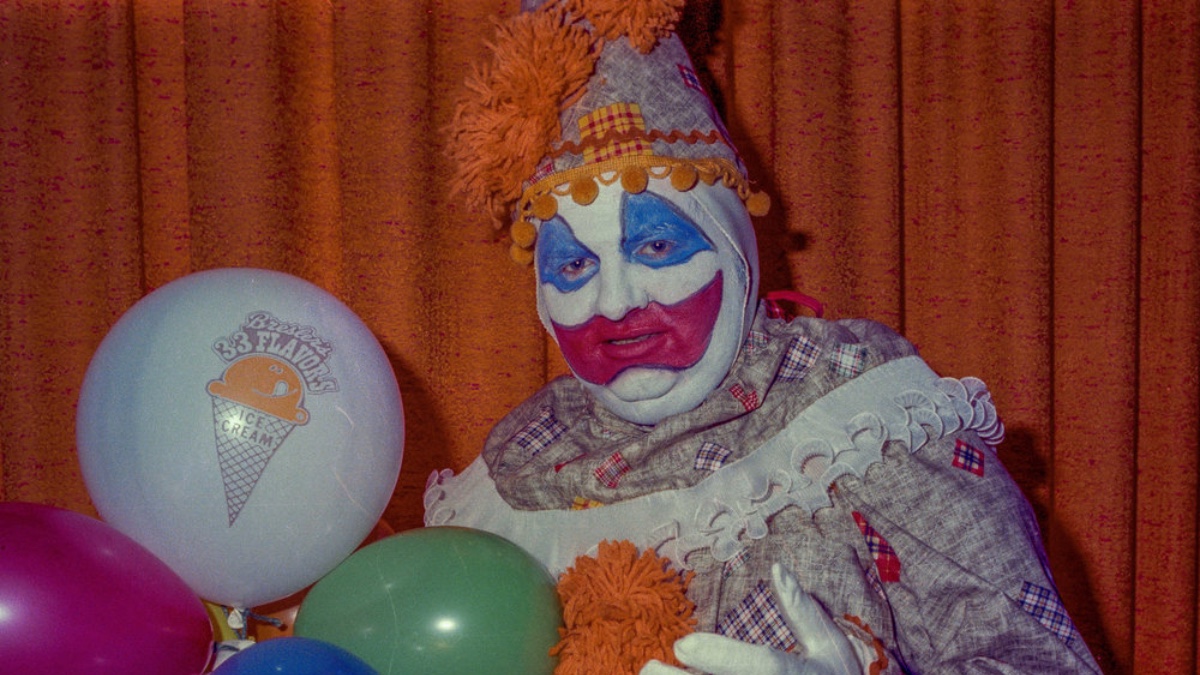“Clowns can get away with murder,” John Wayne Gacy told retired Des Plaines police officer David Hachmeister during a 10-day surveillance operation. The statement made the hair on the investigator’s head stand up. Over the course of Peacock’s original’s six-part docuseries John Wayne Gacy: Devil in Disguise, Hachmeister’s follicles come to perform routine calisthenics.
Gacy is best known as the “Killer Clown,” but what sent Hachmeister’s neurological system into overdrive was how normal this clown appeared to be. That is the biggest reveal and the most common thread across the narrative. Gacy wasn’t Heath Ledger’s Joker in The Dark Knight, and even less like Joaquim Phoenix’s neurotic take. Gacy wasn’t socially inept, he wasn’t freakish, and he certainly wasn’t a loner. He was politically connected, threw a popular annual neighborhood picnic, ran the Polish Constitution Day Parade, and had his picture taken with First Lady Rosalynn Carter. Gacy invited cops up for dinner when they were tailing him.
Even in death, the Killer Clown could bring people together. When Gacy was put to death by lethal injection in 1994, a mob gathered to sing “Na Na Hey Hey Goodbye,” outside Will County’s Stateville Correctional Center.
Producer Rod Blackhurst (Amanda Knox) and the NBC News Studios documentary team show Gacy could ingratiate himself into any social group. He wrote about how to manipulate people in inspirational pamphlets for the Iowa Jaycees. He himself recounts how he got into his local chapter by showing stag films. That was the same way he lured his victims to their deaths, by offering them unskilled construction jobs, free beer, and porn movies.
NBCUniversal’s streaming platform’s first true crime offering is comprehensive. They expertly lay out the Gacy’s investigation, arrest, conviction and execution.They skip very few of the extremely grisly details of Gacy’s crimes and how he committed them. They supply a generous but not overbearing amount of archival news footage from the late 1970s. The victims get well-researched profiles. Chicago journalists Jay Levine, Alison True and Larry Potash recount how, in a town where news was king, Gacy was an unwanted headline. He was an urban nightmare.
Read more
The second episode presents Gacy’s origin story. His sister talks about how he changed into a “different” John after he moved to Waterloo, Iowa, with his first wife in 1966. The episode then details Gacy’s 1968 sodomy conviction. The incident happened with the 15-year-old son of a state representative. Gacy claimed it was “consensual.” He was sentenced to 10 years, but only served 18 months. The psychiatrists said Gacy could not be rehabilitated, but as top cook at the Anamosa State Penitentiary commissary, he found his way into the warden’s heart. Local newscasts and newspaper articles profiled him as a model prisoner.
Gacy didn’t fool a jury though. Even after turning his Painting, Decorating and Maintenance (PDM) construction business into a million-dollar-a-year corporation with only four employees, they found him guilty in two hours. And he doesn’t fool FBI profiler Robert Ressler, who interviewed Gacy on camera in the warden’s office in downstate Menard Correctional Center in 1992.
Ressler’s interview session is the centerpiece of the docuseries, though it is parceled out on an as-needed basis. It is so riveting, viewers might be tempted to binge Mindhunter again. Gacy details murders offhandedly, while maintaining his alibis. He calls the psychiatrists who examined him “clowns,” maintains the police investigation was “bungled,” whines about media coverage, and complains about his defense attorney. Ressler rolls his eyes, and folds his arms, just like the character modeled on him.
The John Wayne Gacy: Devil in Disguise opening includes a revealing snippet of the interview. “The idea that I’m a homosexual and all that garbage,” Gacy protests before the haunting opening titles begin. “They’ve painted this image of me like I strolled down the streets and slaughtered them. If you could see my schedule, my work schedule, you know damn well I was never out there.” The serial killer fervently insists he is bisexual, not homosexual, and asserts how his dance card was full.
An audio interview with Gacy’s sister reveals Gacy and his wife were swingers who swapped partners at Jaycees parties. The docuseries frankly captures the Peyton Place sexual climate of late-1970s Middle America, where liberation became exploitation, and homophobia was the norm.
The episodes also explore the more conspiratorial aspects of the Gacy story. The documentary explains how police often wrote off reports of missing boys and young men as runaways or teen prostitutes. Experts discuss theories about accomplices, sex trafficking and snuff porn rings, and additional victims.
“It takes time for history to happen,” remarks William Dorsch, who maintained a correspondence with Gacy, and believes there are undiscovered victims. When Gacy was caught, 33 bodies were discovered, 26 were discovered rotting under the floorboards in the crawlspace of his Norwood Park Township ranch home in 1978. In a recording, Gacy’s second wife remembers bugging him to do something about the smell. Other bodies were found nearby. The documentary posits more could be found at a property where Gacy worked as a maintenance man, and in the yard of an apartment building in Northwest Chicago.
In a crowded field of long-form serial killer-investigative journalism, like Atlanta’s Missing and Murdered: The Lost Children, Night Stalker: The Hunt For a Serial Killer, and Conversations with a Killer: The Ted Bundy Tapes, the Peacock debut distinguishes itself with a deliberate and thorough examination. John Wayne Gacy: Devil in Disguise is a definitive history.
“Clowning has gotten a bad name,” Gacy admits in the interviews. “Because of this thing with me.” John Wayne Gacy: Devil in Disguise puts an effective end to the association. After he was sentenced to death he did paint self-portraits in costume, but “Pogo the Clown” had nothing to do with killings. He was far too flamboyant. Gacy was just a regular guy.
John Wayne Gacy: Devil in Disguise premieres all six episodes on March 25 on Peacock.


